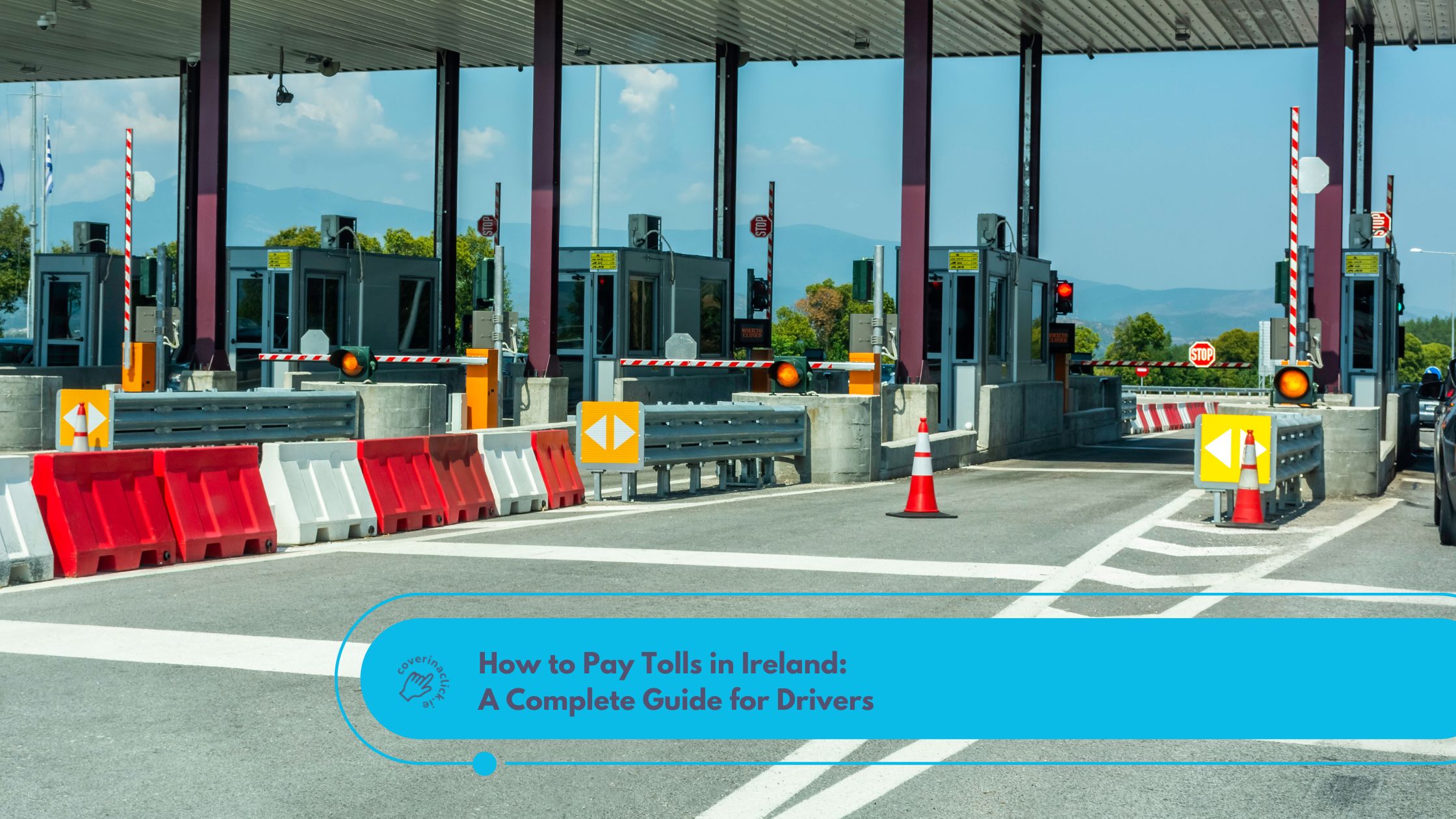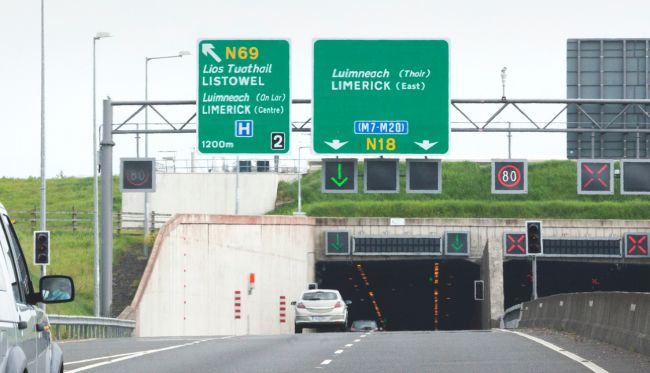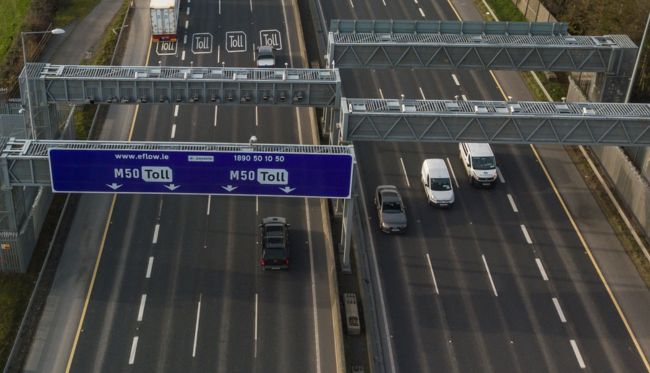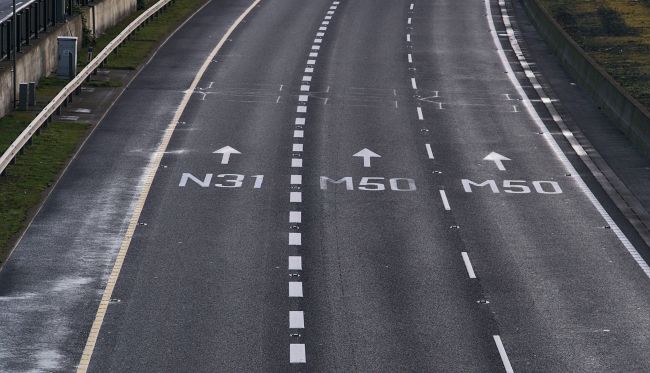How to Pay Tolls in Ireland: A Complete Guide for Drivers

If you’re wondering how to pay tolls in Ireland, this guide will walk you through everything you need to know. We talk about using toll roads in Ireland, payment options, locations, and what to do if you miss paying a toll. We’ll also answer the question of how much are tolls in Ireland. Whether you're a regular commuter or just driving through the country, knowing the ins and outs of paying tolls in Ireland can save you time, money, and hassle. As your go-to provider of young driver insurance, we're here to help you confidently navigate the road.
Where Are the Toll Roads in Ireland?
Ireland has several toll roads scattered across the country. These roads help maintain the motorway network and ensure smooth, well-maintained travel routes. All the major toll roads in Ireland are located on the following roads:
· M1: Gormanston – Monasterboice (Drogheda)
· M3: Clonee – Kells (x2 – Clonee to Kells Grange and Clonee to Kells Blackbull)
· M4: Kilcock – Enfield – Kinnegad
· M6: Ballinasloe – Galway
· M7/M8: Portlaoise – Castletown/Portlaoise – Cullahill
· M8: Rathcormac – Fermoy Bypass
· M50: Dublin Ring Road (eFlow barrier-free toll)
· N25: Waterford City Bypass
· Dublin Port Tunnel
· Limerick Tunnel: On the N1
· East Link Toll Bridge
Each of these tolls in Ireland charges a fee, which can vary depending on the vehicle type and the specific route. Visit Transport Infrastructure Ireland to learn more about the specific locations of each toll.

How Much Are Tolls in Ireland?
Tolls in Ireland can vary depending on the road, vehicle type, and whether you are using a standard or commercial vehicle. Typically, cars pay between €1.70 and €3.10 per toll, with higher charges for larger vehicles such as trucks and buses. For example:
· M50 (Dublin): The M50 is the busiest motorway toll in Ireland, with a fee of €3.10 for private cars or €2.50 with a tag. The M50 operates with a barrier-free system, meaning no toll booths. Payment must be made online or through other methods within 24 hours.
· M1 (Drogheda): The toll is €2.30 for cars.
· N6 (Galway): The cost is also €2.30 for cars.
When considering how much tolls are in Ireland, drivers should check current toll rates. This should be checked before embarking on long journeys as they may vary across different routes and vehicles.

How to Pay Tolls in Ireland: Methods of Payment
When figuring out how paying tolls in Ireland works, it’s essential to understand the different payment methods available to make your journey smooth:
1. At Toll Plazas
Most toll roads in Ireland have toll plazas where you can pay using cash or card.
2. Tag System
Electronic toll tags are an excellent option for frequent users of motorway tolls in Ireland. These tags allow automatic toll payments as you pass under a tolling point, making it quick and hassle-free. The amount is deducted from your account each month in the form of direct debit. You can also choose to top-up your account in advance using a pre-paid account.
3. eFlow (M50)
For drivers using the M50, a barrier-free toll, you must pay the toll online via the eFlow website, at a Payzone outlet, or using the M50 Quick Pay app. You can also register for a tag to automate payments.
4. Via App or Website
Some toll roads also allow payment via an app or through the road operator's website.
If you’re using a rental car, make sure to clarify toll payment arrangements with the rental company, as they may have tag systems in place. Understanding how to pay tolls is crucial for all drivers, including those with first-time driver insurance.
What Happens if You Don’t Pay Your Tolls?
Failure to pay the M50 toll on time can result in escalating penalties. If you miss the 8 pm deadline the day after your journey, you’ll be charged an additional €3.50 on top of the toll fee. If you fail to pay this within 14 days, an additional penalty of €46.50 will be added. If the outstanding amount is still unpaid after another 56 days, a further late payment charge of €116.00 will apply. To avoid these increasing fees, it’s important to make your M50 toll payment promptly.
For other tolls in Ireland, failing to pay at a toll plaza can also lead to penalties. Under Irish law, not paying your toll or disobeying the instructions of authorised personnel can result in a fine of up to €5,000, a prison term of up to 6 months, or both. To avoid these hefty consequences, ensure you're aware of the payment methods before travelling.

Exemptions from Paying Tolls in Ireland
Certain vehicles and personnel are exempt from paying motorway tolls in Ireland. These include:
· Emergency Services Vehicles: Gardaí, ambulances, fire brigades.
· Defence Forces Vehicles.
· Adapted Vehicles for Disabled Drivers.
These exemptions ensure that essential services can operate without delay when travelling. To learn more about the Disability Toll Exemption Scheme and eligibility around the scheme, visit the official website.
Reduced Rates for Electric Vehicles - End of Scheme
Previously, drivers of electric vehicles (EVs) benefited from reduced rates on motorway tolls in Ireland. However, the scheme ended in December 2023, and EVs are now subject to the same toll charges as traditional vehicles. This change means EV drivers must now pay full toll fees when using Irish motorways.
Getting Set Up with a Toll Tag in Ireland
When considering how to pay tolls in Ireland, using a toll tag is one of the most convenient options. A toll tag is an electronic device that automatically deducts toll fees from your account as you pass through toll points, allowing for a faster and hassle-free experience. Here's how you can set it up.
First, you'll need to sign up with a toll tag provider. Popular options in Ireland include eFlow, TollTag.ie, and Easytrip.ie. You can register online via their websites or at select retail outlets. Once registered, you’ll receive your toll tag device, which you should attach to your vehicle's windscreen. The toll tag works with a prepaid account that you can top up as needed, or you can link it to a bank account or credit card for automatic payments.
Using a toll tag is particularly beneficial for frequent drivers on toll roads, as it helps you avoid manual payments and any risk of late fees. For the M50, in particular, a toll tag ensures you're always covered, as it eliminates the need to pay online after your journey. For all other tolls, you can use the express lane when you have a tag fitted.
Setting up a toll tag offers a smooth driving experience while avoiding fines and delays.
Check out our best car accessories for road trips!
Using toll roads in Ireland is straightforward once you understand the locations, costs, and payment options. Whether you’re using cash, card, or an electronic tag, it’s essential to stay on top of your toll payments to avoid unnecessary fines. Be sure to plan your journey in advance and familiarise yourself with the toll costs along your route.
For first-time drivers, learning how to pay tolls in Ireland is just one part of getting on the road. At Coverinaclick.ie, we offer affordable car insurance for young drivers. Visit our website today to get a car insurance quote and ensure you’re covered before hitting the road!










